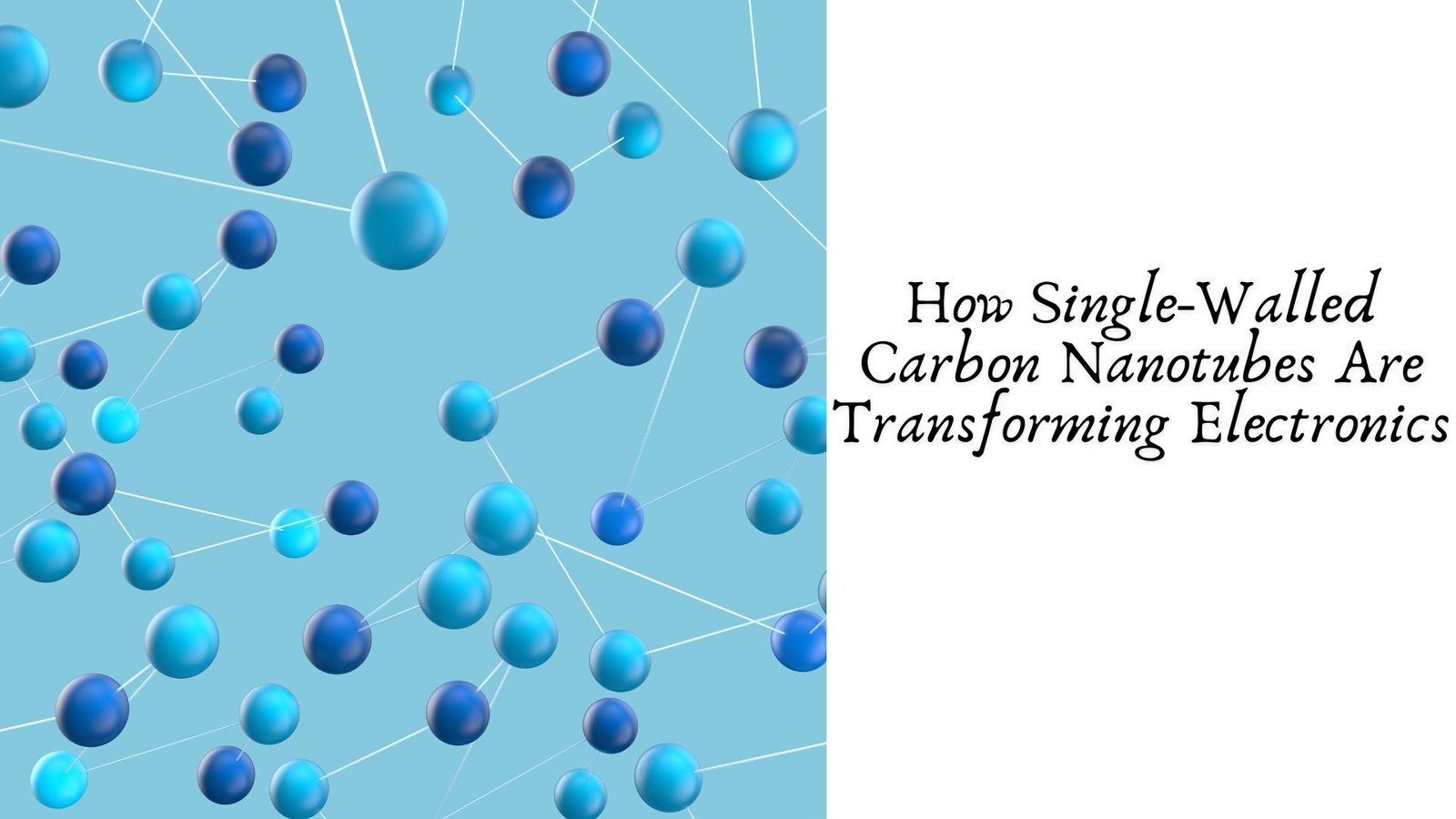Introduction
Single walled carbon nanotubes (SWCNTs) have emerged as one of the most promising materials in modern electronics, thanks to their extraordinary electrical, thermal, and mechanical properties. These cylindrical structures, composed of a single layer of carbon atoms arranged in a hexagonal lattice, offer superior conductivity and strength compared to traditional materials like silicon. Their unique characteristics are driving innovations across multiple domains, from transistors to flexible electronics and beyond.
The Unique Properties of SWCNTs
SWCNTs possess a range of properties that make them ideal for electronic applications:
- Exceptional Electrical Conductivity: SWCNTs can behave as either metallic or semiconducting, making them suitable for various electronic applications.
- High Carrier Mobility: The rapid movement of charge carriers within SWCNTs enhances the performance of transistors and other electronic components.
- Superior Thermal Conductivity: The ability to dissipate heat efficiently makes them an excellent choice for high-power electronic devices.
- Mechanical Strength and Flexibility: Their remarkable tensile strength and flexibility enable the development of bendable and stretchable electronics.
Applications in Electronics
Next-Generation Transistors
SWCNTs are considered strong candidates for replacing silicon in transistors, the building blocks of modern electronic devices. Due to their high carrier mobility and small size, SWCNT-based transistors can operate at lower power levels while delivering higher performance than conventional silicon-based transistors. Researchers are developing carbon nanotube field-effect transistors (CNTFETs) that offer improved switching speeds and energy efficiency, paving the way for more powerful and compact devices.
Flexible and Wearable Electronics
The flexibility and strength of SWCNTs have enabled the development of bendable electronic components, crucial for wearable technology. From smart fabrics that monitor health parameters to foldable displays and sensors, SWCNTs are making electronics more adaptable to various applications. Their transparent and conductive nature also makes them suitable for touchscreen displays and flexible solar panels.
High-Performance Interconnects
SWCNTs provide an alternative to traditional copper-based interconnects in microchips. The increasing miniaturization of electronic components has led to performance bottlenecks due to resistance and heat generation in copper wiring. SWCNTs, with their superior electrical and thermal conductivity, offer a viable solution by reducing energy losses and improving chip efficiency.
Energy Storage and Supercapacitors
In addition to their role in circuit components, SWCNTs are revolutionizing energy storage. They are being used to enhance the efficiency of lithium-ion batteries and supercapacitors by increasing energy density and charge-discharge rates. These advancements have significant implications for portable electronics, electric vehicles, and renewable energy storage systems.
Sensors and Biosensors
SWCNTs exhibit high sensitivity to environmental changes, making them excellent materials for sensor development. They are being utilized in gas sensors, biosensors, and chemical detection devices, where their high surface area and electrical responsiveness allow for real-time monitoring of pollutants, toxins, and biomolecules. This capability is particularly beneficial for medical diagnostics and environmental safety applications.
Challenges and Future Prospects
Despite their remarkable advantages, widespread adoption of SWCNTs in commercial electronics faces several challenges:
- Scalability and Production Costs: Large-scale, cost-effective synthesis of high-purity SWCNTs remains a significant hurdle.
- Integration with Existing Technologies: Adapting current manufacturing processes to incorporate SWCNT-based components requires further research and development.
- Material Consistency and Sorting: Ensuring uniformity in metallic and semiconducting SWCNTs is critical for consistent device performance.
Ongoing research aims to overcome these challenges, with advances in synthesis techniques and integration methods bringing SWCNT-based electronics closer to mainstream adoption. As researchers refine fabrication processes and enhance material purity, SWCNTs are expected to play a crucial role in the evolution of next-generation electronics.
Conclusion
Single-walled carbon nanotubes are at the forefront of electronic innovation, offering groundbreaking possibilities in transistor design, flexible electronics, energy storage, and sensors. With continuous advancements in material science and nanotechnology, SWCNTs hold the potential to transform the electronics industry, driving the development of faster, more efficient, and more versatile devices. As research and production methods improve, SWCNTs could redefine the future of computing, communication, and energy storage, making electronics more powerful and sustainable than ever before.



